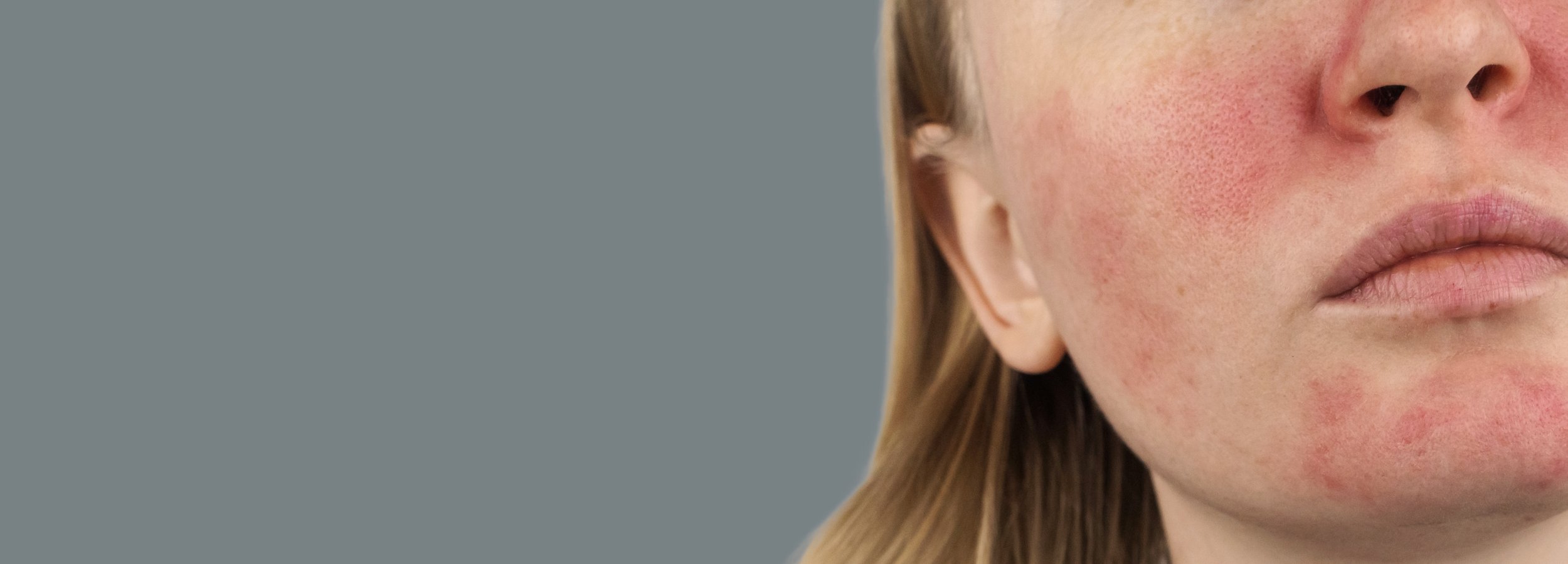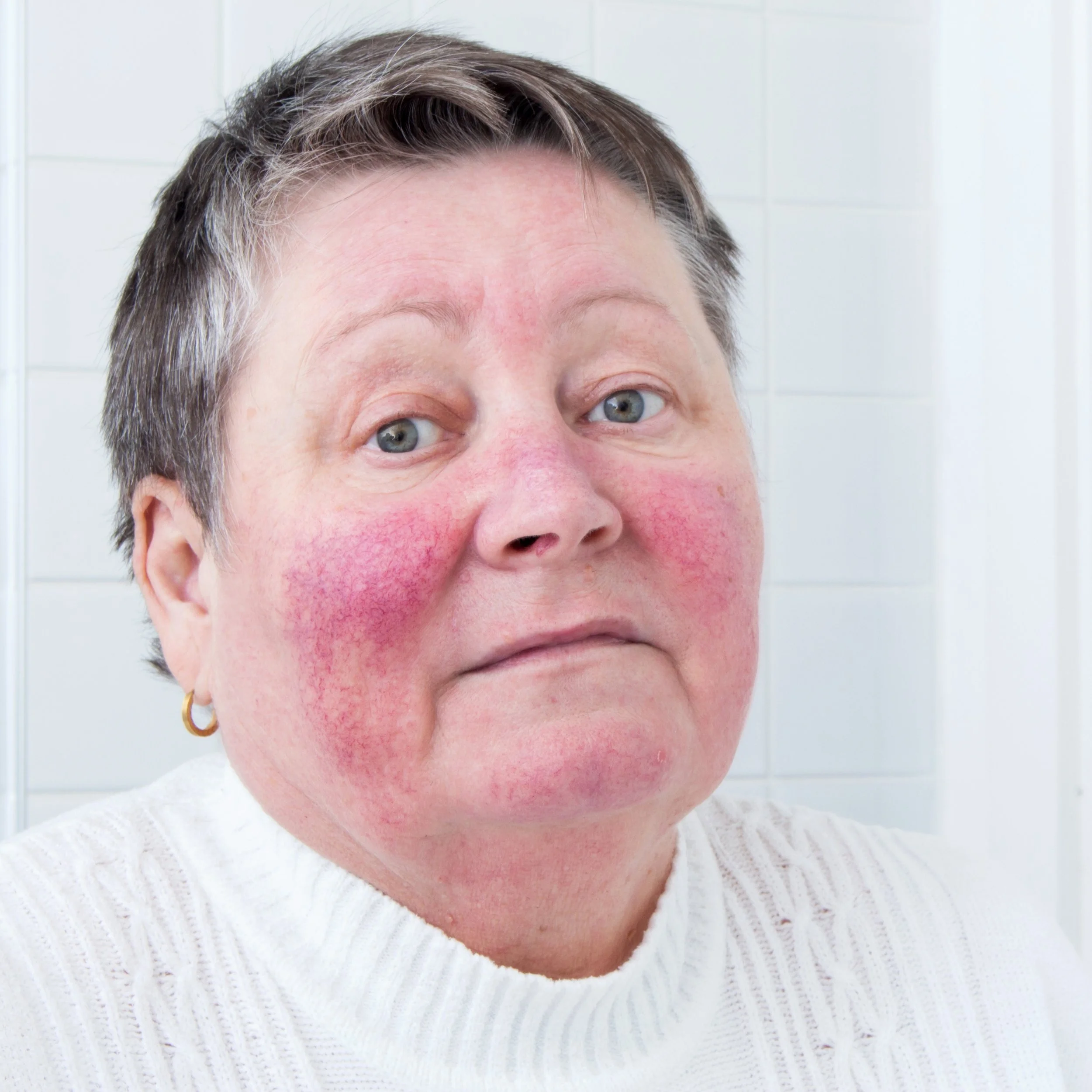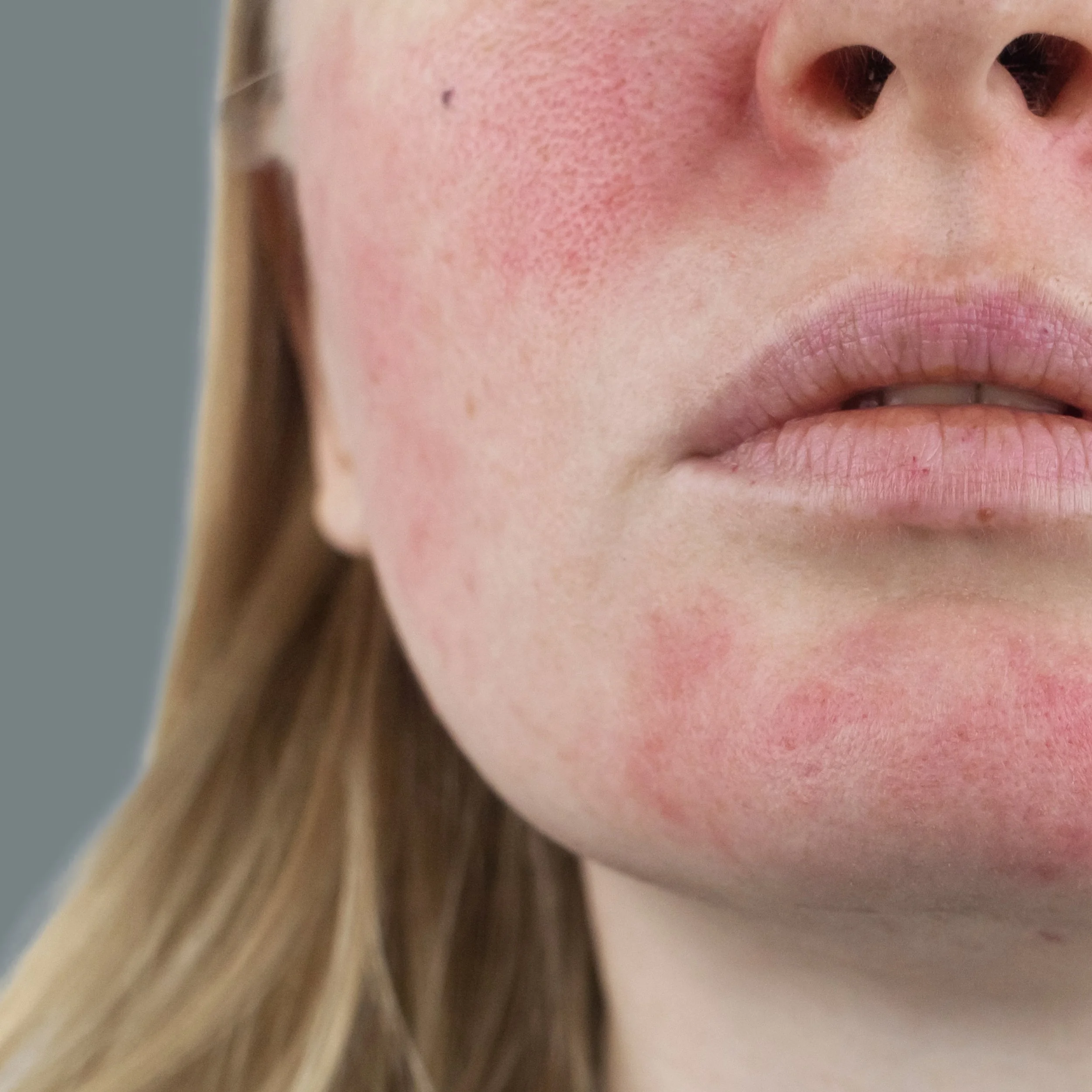
Rosacea
Transform Your Skin's Story with DermaEnvy.
Rosacea Treatment + Care
Rosacea is a chronic skin condition that affects approximately ten percent of the population.
10%
Rosacea Treatments at DermaEnvy
Rosacea is more than just redness and flushing; it's a condition that often carries emotional and psychological weight, affecting self-esteem and confidence. At DermaEnvy, we understand that your skin's appearance is deeply tied to your overall well-being. This is why we take a multi-faceted approach to understanding and treating rosacea. We delve into the latest in skincare innovation and therapies to effectively manage your rosacea symptoms, allowing you to regain a clearer, more balanced complexion.
What Is Rosacea?
Rosacea is a skin condition characterized by redness, flushing, and visible blood vessels, often accompanied by small, red, pus-filled bumps. Primarily manifesting on the face, particularly the cheeks, nose, and forehead, it can occasionally also affect the neck, chest, and ears. Unlike acne, rosacea is more common in adults, particularly those with fair skin, and its symptoms can flare up and recede in cycles.
What Causes Rosacea?
Here are some of the most common causes and triggers of rosacea:
Genetic Predisposition: A family history of rosacea can increase your likelihood of developing the condition.
Blood Vessel Abnormalities: Issues with facial blood vessels can contribute to redness and flushing.
Skin Barrier Dysfunction: An impaired skin barrier can make skin more sensitive and prone to irritation, exacerbating rosacea symptoms.
Immune System Factors: Some theories suggest that an overactive immune system may play a role in the inflammation associated with rosacea.
Triggers: Various factors such as spicy foods, alcohol, temperature extremes, stress, and sun exposure can trigger or worsen rosacea symptoms.
Hormonal Changes: Although not fully understood, hormonal fluctuations during menopause, pregnancy, or periods can sometimes exacerbate rosacea.
Demodex Mites: These microscopic mites naturally live on the skin but can be more abundant in people with rosacea, potentially contributing to symptoms.
Symptoms
The most common symptom amongst individuals with rosacea is redness on the cheeks, nose, chin, and forehead. Although not as common, the colour can appear on your neck, head, ears, or chest.
After a while, broken blood vessels might show through your skin, which can thicken and swell up. Up to 50% of people with rosacea may also experience eye problems such as redness, swelling, and pain.
Other symptoms you may experience are:
Stinging and burning of your skin.
Patches of rough, dry skin.
A swollen, bulb-shaped nose.
Larger pores.
Broken blood vessels on your eyelids.
Bumps on your eyelids.
Problems with vision.
Rosacea symptoms can come and go or they might flare up for a few weeks, fade, and then come back.
Book A Complimentary
Skin Consultation
Enviable skin happens here. Our trained medical aestheticians and skincare experts are here to help you achieve your skin goals.




